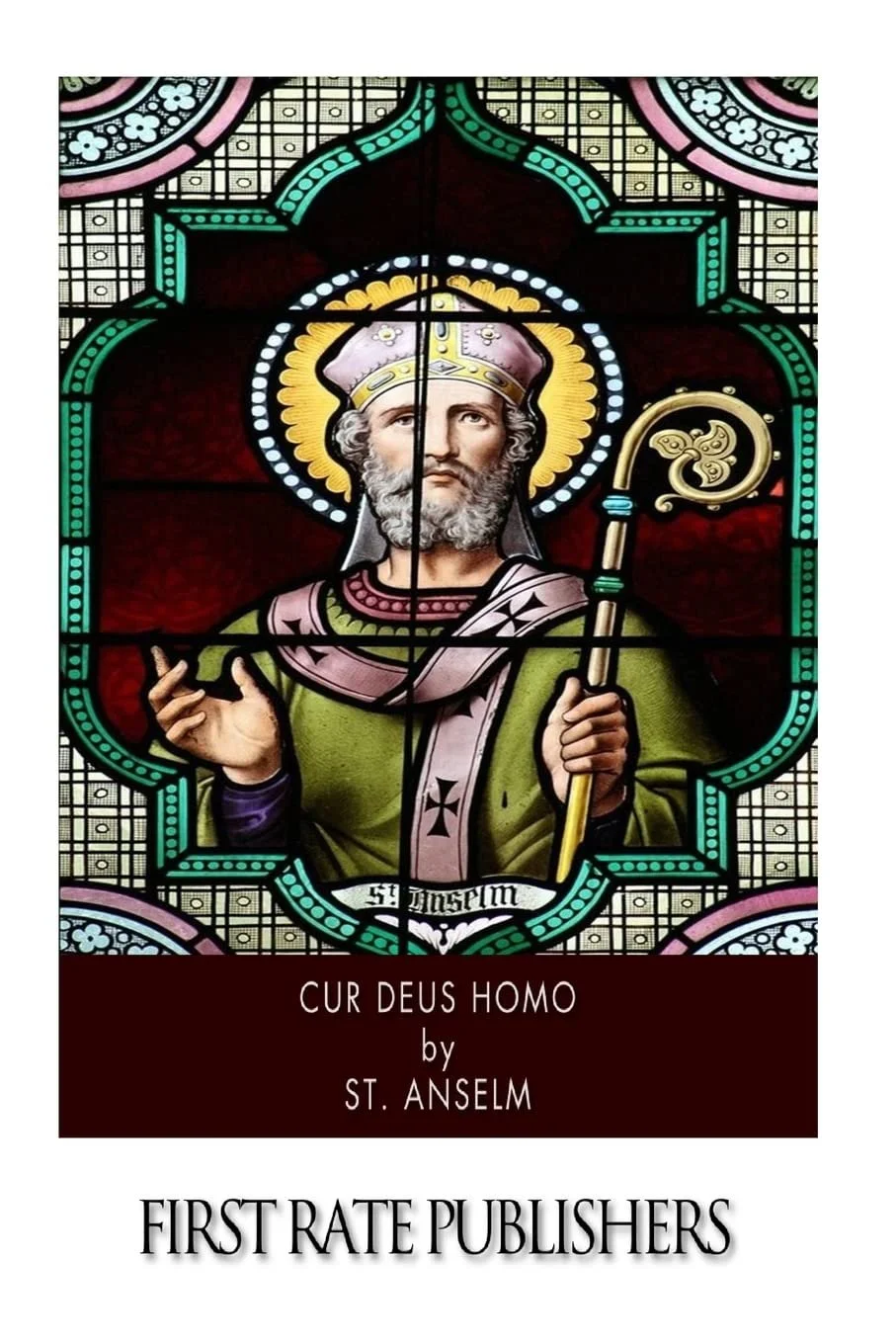The views expressed in this article are of the author only and do not necessarily represent those of the Center for Pastor Theologians.
Anselm held the office of the Archbishop of Canterbury from 1093–1109, during which he wrote Cur Deus Homo (Why God Became a Man). In this two-part scholastic dialogue between Anselm and Boso, who serves as Anselm’s foil in the dialogue, the topic posed by the title gets addressed: “for what cause or necessity . . . God became man, and by his own death, as we believe and affirm, restored life to the world” (1.1). For Anselm, the goal of working through this question is not to prove the doctrine of the atonement in order to bring non-Christians to faith. Rather, Anselm’s seeks to demonstrate that the atonement is truly rational, so that believers may love God more and understand him better (1.1).
The logic of Anselm’s argument begins with the relationship between God and humanity. As a creature, humanity’s chief duty is to “render to God his due,” but humanity sinned and ultimately dishonored God (1.11). Since human sin tarnished God’s honor, it must be restored, resulting in a burdensome debt for mankind. According to Anselm, God could not forgive this debt out of mercy, because this would violate God’s character (1.6, 10–13). At the same time, God could not punish Satan for the fall or destroy humanity, because this would defeat the purpose of his creation (1.7, 2.4–5). The only way God’s honor could be restored is through “satisfaction.” Accordingly, satisfaction is accomplished when man gives to God both the original honor due to him and makes reparation for the insult to God’s honor (1.11, 19). Yet, it is impossible for man to provide satisfaction on his own because of the effects of sin (1.20–23).
On the basis of absolute necessity, Anselm concludes that the only solution is the “God-man.” The God-man is Anselm’s technical term for Christ, highlighting his two natures in the incarnation (1.25, 2.4–8). For Anselm, the two natures in a single individual is critical. The substitute must be both God, in order to provide a perfect sacrifice, and human, in order to pay man’s debt and restore humanity (2.6–7). Therefore, as the God-man, Christ came to pay the debt of humanity’s sin as a substitute and restore God’s honor by offering a gift which he did not personally owe or was not required to pay. As a sinless being, Christ was not obligated to suffer and die, and yet he voluntarily gave up his life as satisfaction for the sins of humanity. He was, therefore, the perfect sacrifice, and Christ’s death restored God’s honor (2.6–7). Furthermore, justice requires Christ’s free gift be rewarded. Since there is nothing the Father can give the Son, the reward is transferred to humanity in the form of forgiveness of sins to those who believe (2.14–15, 19).
Anselm’s Cur Deus Homo is an important work in several ways. First, it plays a significant role in the historical development of the doctrine of the atonement. For example, Anselm was the first to understand most clearly that Christ redeemed humanity not merely from the effects of sin or Satan but from sin itself, and that redemption is primarily the reconciliation between God and humanity (cf. Bavinck, Reformed Dogmatics, 3:344). Second, Cur Deus Homo makes important contributions even for contemporary Christian thought. For example, Anselm’s treatment on the eternal relationship between the Father and the Son in relation to the atonement underlines its significant intra-trinitarian dynamics. Furthermore, Anselm’s view of sin as a disruption of the perfect created order highlights the damaging effects of sin to both God’s honor and the world. Ultimately, Anselm serves to remind contemporary Christians that God’s justice was on display at the cross, ultimately combating the overemphasis of God’s love and mercy, and highlighting the offensive nature of sin.
As much as Anselm’s Cur Deus Homo is significant in the history of doctrine and still relevant for today, it is not without problems. In short, Anselm’s handling of the atonement tends to over-emphasize certain features while neglecting others. For example, Anselm’s depiction of the atonement over-emphasizes Christ’s death as the basis of redemption while neglecting the atoning significance of Christ’s life on earth. At the same time, Anselm’s emphasis on the divine characteristics of the atonement tends to disregard its important human aspects, as in a believer’s reception of its benefits. As much as the work of Christ is a transaction between the Father and the Son, it also involves a mystical union between Christ and the believer.
Anselm’s Cur Deus Homo is certainly not familiar terrain for modern readers, especially those with limited categories in systematic and historical theology. Anselm’s digression on the relationship between the number of fallen angels and holy men in heaven will seem alien to contemporary issues debated in Scripture. Relatedly, Anselm rarely cites Scripture, which may bother those looking for clear and tangible support directly from scripture. Yet this book is a worthy read for pastor-theologians, not only because of its significance in the history of theology, but also because it will assist them as they think through and preach the doctrine of the atonement.
Mickey Klink (PhD, University of St. Andrews) is the Senior Pastor of Hope Evangelical Free Church in Roscoe, IL. He previously served for nearly a decade of teaching at Talbot School of Theology, Biola University in southern California. He is the author of several books on a range of topics including biblical theology, the Gospel of John, and the church. He is a member of the St. John Fellowship of the Center for Pastor Theologians.
Olle Larson is an elder at Hope Evangelical Free Church in Roscoe, IL.





